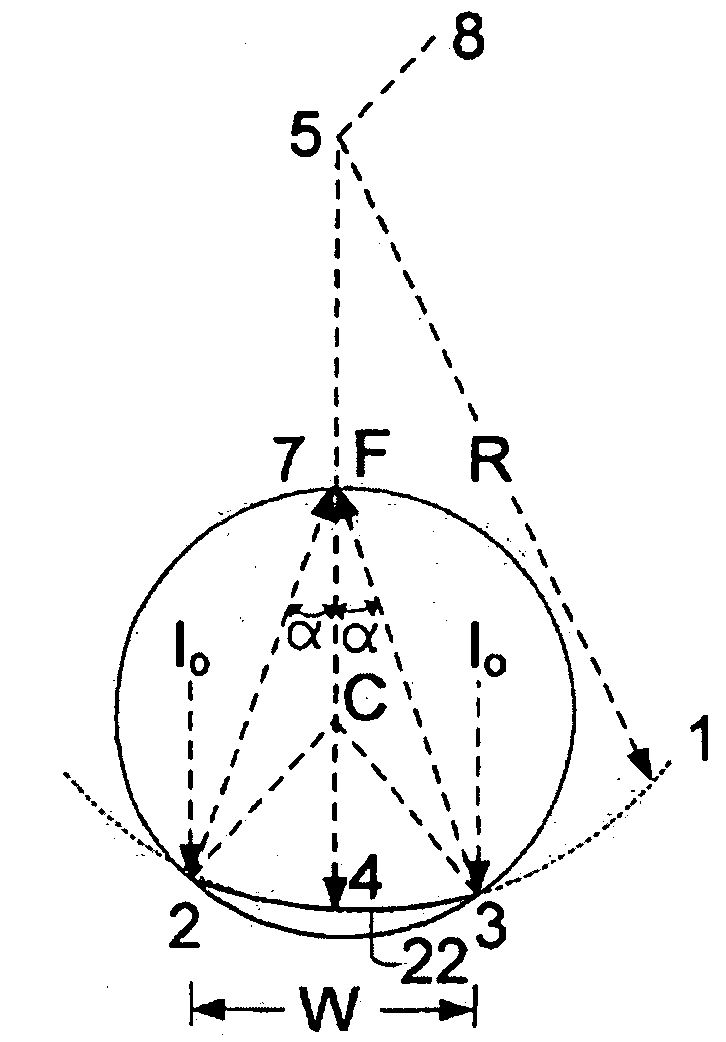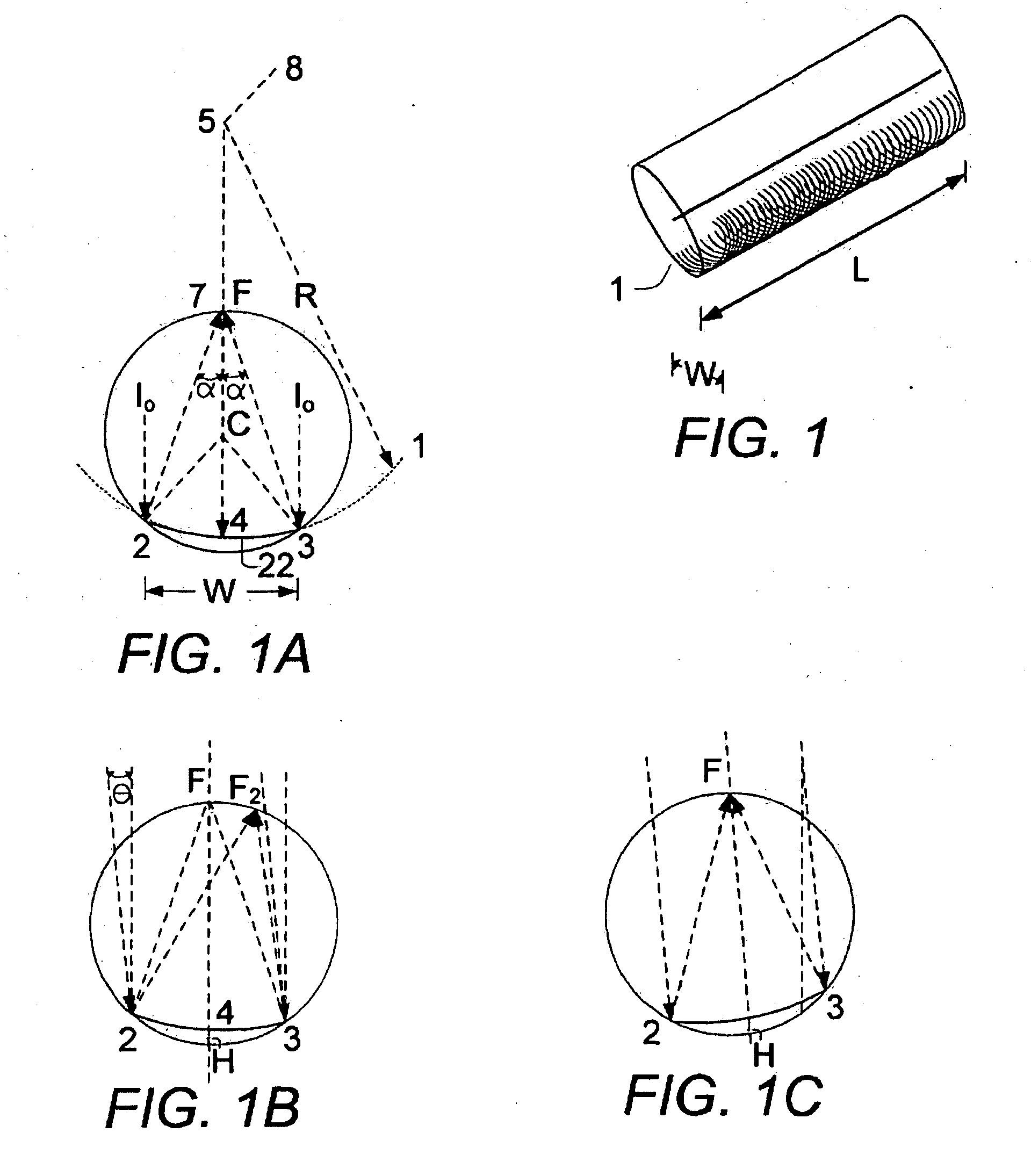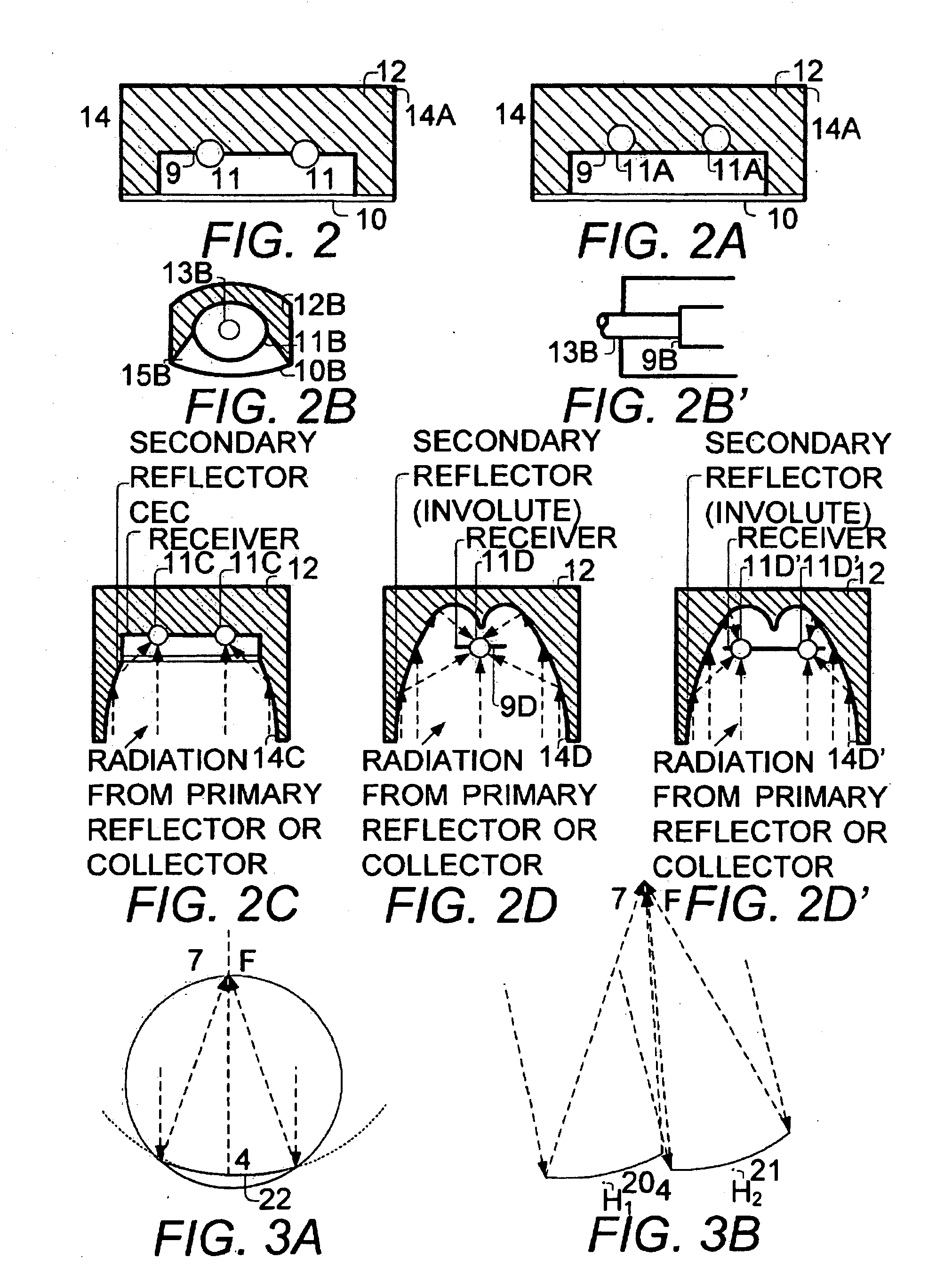Solar collector system
a solar collector and collector technology, applied in solar heat systems, heat collector mounting/supports, light and heating equipment, etc., can solve the problems of reducing the degree of concentration that can be obtained, the frame of this type of collecting system is very expensive, and the piping may develop leaks, so as to maximize the absorption
- Summary
- Abstract
- Description
- Claims
- Application Information
AI Technical Summary
Benefits of technology
Problems solved by technology
Method used
Image
Examples
Embodiment Construction
[0045]As used herein the term “tracking” refers to a process in which the reflector follow the motion of the sun. The present invention can be better understood by reference to FIG. 1A, FIG. 1B and FIG. 1C which cover the basic physics which is advantageously exploited in the present invention.
[0046]FIG. 1A shows mirror 2-3 of width W, which concentrates a beam of solar radiation onto a receiver (not shown) in the focal region F. The beam is paraxial and if the profile is parabolic, the concentrated beam forms a thin line of energy on the receiver. However, if the beam is not paraxial, but tilted at an angle (θ), an image of concentrated light is formed at F2 (see FIG. 1B). Whatever the paraxial departure (θ) is, the image always falls on the cc, the circumscribing circle, that passes through the mirror extremities 2 and 3 and the focus F. The center of this circle is at C, C being a geometrical property of the mirror so that if the mirror moves, C moves with it. The central area of...
PUM
 Login to View More
Login to View More Abstract
Description
Claims
Application Information
 Login to View More
Login to View More - R&D
- Intellectual Property
- Life Sciences
- Materials
- Tech Scout
- Unparalleled Data Quality
- Higher Quality Content
- 60% Fewer Hallucinations
Browse by: Latest US Patents, China's latest patents, Technical Efficacy Thesaurus, Application Domain, Technology Topic, Popular Technical Reports.
© 2025 PatSnap. All rights reserved.Legal|Privacy policy|Modern Slavery Act Transparency Statement|Sitemap|About US| Contact US: help@patsnap.com



